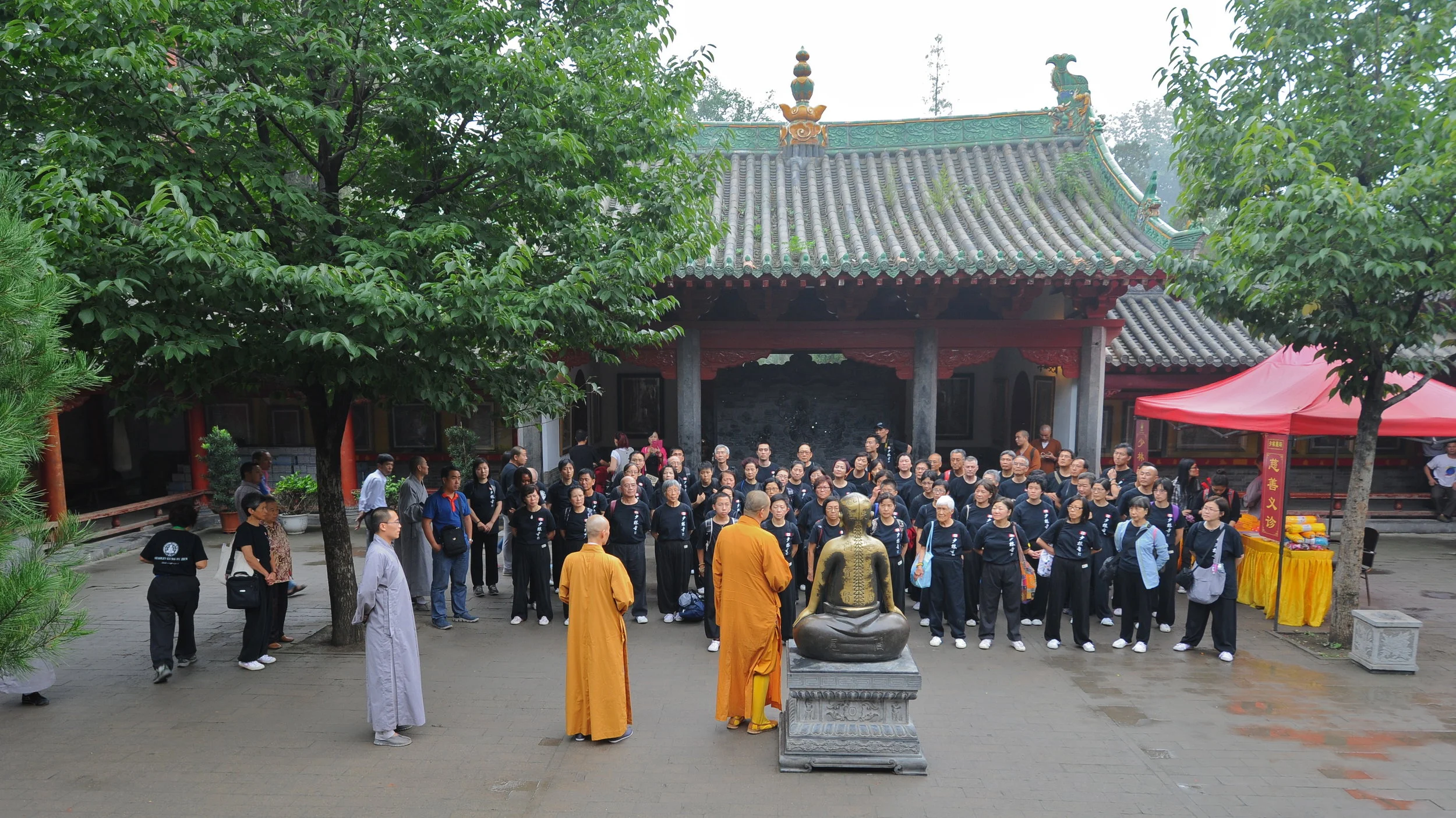In more than 1500 years’ legacy of Shaolin culture since the establishment of Shaolin Temple in 495AD, Shaolin Medicine has become an intangible cultural heritage of mankind with authenticity, peculiarity and uniqueness. As one of the most outstanding representatives of excellent Chinese culture, it has strong international appeal.
Buddhist medicine is an indiscerptible part of Buddhism and enjoys an extremely high status in the history of the Eastern medicine. It is a medicine which can really treat both root causes and symptoms. Sakyamuni, also called the Great Healer, had spent nearly four years in instructing Buddhist Medical System, with the aim to relieve the sentient beings from the sufferings of illness and to make it an important tool for disseminating Buddhism. The ingenious combination of the medicine of Chinese Buddhism and folk traditional Chinese medicine makes the distinctive Buddhist Medicine of China, such as Traumatology of Shaolin Temple and Gynecology of Zhulin Temple, etc. Among them Shaolin Traumatology School is the most representative and most influential.
Shaolin Medicine originated in the Wei and Jin Dynasties (220-581), and has a history of over 1000 years. After the development in the Tang and Song Dynasties (618-1279), it finally took shape in the Ming Dynasty (1368-1644), and was enriched and improved in the Qing Dynasty (1616-1911). The Shaolin Medicine has a close relationship with the development of Shaolin Kung Fu. Most prominent Shaolin monks in history were versed in Chan, Kung Fu and Medicine, which is known to the world. For example, Tanzong and Huiyang in the Tang Dynasty (618-907), Fuju and Zhiguang in the Five Dynasties (907-960), Shiyan and Zongfa in the Yuan Dynasty, Yuekong, Zhizheng and Zhichun in the Ming Dynasty, Meiting in the Qing Dynasty. From the late Ming Dynasty, there are Chunji, Jiqin, Zhenhou, Zhenxu, Henglin, Miaoyue, Chande, etc. Their prescriptions are usually based on the theories of Chinese traditional medicine, which is an indispensable part of Chinese Traumatology.
A famous historian of the Yuan Dynasty, Yuan Haowen, wrote in his Story Shaolin Pharmacy Bureau: Shaolin Pharmacy Bureau dates back from the Jin Dynasty (1217), thus has a history of more than 800 years. The Pharmacy Bureau at that time was primarily used for treating the traumatic injuries and other diseases of Shaolin monks. Later it mainly served the local people and those who came from far away. Due to the fact that all the treatment and medicines were free, the patients would donate money after the curing of diseases. Shaolin Pharmacy Bureau has various ways to cure diseases or keep fit, such as the famous Yi Jin Xi Sui Jing and Shaolin Neigong. There are also many secret recipes handed down by eminent monks for promoting health and longevity or curing diseases. By the period of the Republic of China, Shaolin Medicine had got treatises on medicine of millions of words, and thousands of prescriptions, which are seldom transmitted to outsiders due to Buddhist precepts.
Yuan Haowen stated that the praiseworthy part of Shaolin Pharmacy Bureau is its inheritance of medical ethics more than the non-transmission to outsiders. Shaolin Chan Kung Fu and Shaolin Chan Medicine are transmitted from generation to generation without decline. By the compassionate morality and the pursuit of excellence, they finally earn the respect from the world and enable themselves to be the precious intellectual treasures of Shaolin Temple. In the past 800 years, Shaolin Pharmacy Bureau has benefited numerous people. Nevertheless, it was suspended occasionally in history because of the warfare or other reasons.
When master Fuyu served as the abbot of Shaolin Temple, he advocated the principle of “taking the traumatology department as the centre, and internal department, department of pediatrics as supplements to cure the diseases and save people”, which enables the Shaolin Pharmacy Bureau to see a flowering of creativity. In the Ming Dynasty, relatively complete medical institute and medical system were established; pharmacy department (in charge of gathering medical herbs and planting and processing of medical herbs) was set up; meanwhile, medicine school was founded to educate specialized monk doctors. In modern times, due to the declining of the nation, the affairs of the bureau were suspended for a period.
In recent years, under the leadership of Abbot Shi Yong Xin, Shaolin Temple has organized the monks and experts on Chinese medicine to conduct many organizing and mining work. After three years’ efforts, the rare edition of Secrets of Shaolin Kung Fu and Medicine finally came out which contains Shaolin secret recipes handed down from the 29th Venerable Abbot Xing Zheng to Venerable Abbot Yong Xin before the former passed away. The book now has become the permanent collection of National History Museum, National Library and Swedish king. In 2004, Shaolin Temple resumed the organizational system of Shaolin Pharmacy Bureau, since when the bureau has been providing medical services with featured Buddhist compassionate spirit for more sentient beings so as to make due contributions to the human health. It takes the inheritance of Shaolin medicine culture as its mission, the promotion of traditional medicine as its responsibility and serving the society as the purpose.
Shaolin Chan Medicine combines traditional Shaolin Medicine with modern medicine so as to better protect these treasures and benefit people. It takes “meditation” as the basic means, employs the doctrines of respiration, Daoyin, Qixue, meridians and collaterals and viscera-state as main theories, and adopts the approaches of “contemplation”, “aeration”, “massage” to diagnose, treat and nurse the patient. All of these can generate a unique health effect. The most distinctive feature of Chan Medicine is to eliminate the root cause of the delusion and find the Buddha-nature through experiencing Chan heart and cultivating pure mind.




